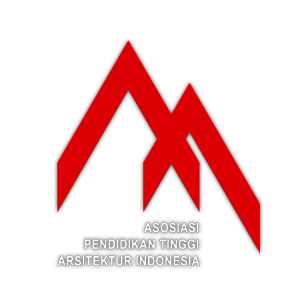The Potential Development Analysis of Kampung City Toward Special Interest Tourism (Art, Culture, and Architcture) In The City Of Malang (Case Study: Heritage Village, Malang City)
Wiwik Dwi Susanti(1), Adibah Nurul Yunisya(2*)(1) Universitas Pembangunan Nasional "Veteran" Jawa Timur
(2) Universitas Pembangunan Nasional "Veteran" Jawa Timur
(*) Corresponding Author
Abstract
Special interest tourism is currently developing and becoming one of the favourite destinations for tourists. One of the conceptual developments of special interest tourism is by developing urban villages. The urban village is one of the miniatures of Indonesia which contains various kinds of cultural wealth, history, social values, etc. The Kayutangan heritage village is one of the urban villages developed by the Malang City Government as a special interest tourist destination in the middle of Malang City. The character of the urban village is enriched with historical, architectural, art and cultural values which have not been explored and optimized as a special interest tourist destination. The heritage village only emphasizes the colonization infrastructure legacy while other potentials have not been explored optimally. Through this qualitative research, the other four potentials (historical, architectural, art, and cultural values) will be explored in detail and provide educational values for the Kayutangan urban village tourism.
Keywords
Full Text:
PDFReferences
Antariksa. (2017). Teori dan Metode Pelestarian Arsitektur dan Lingkungan Binaan. Cahaya Atma Pustaka, Yogyakarta.
Arifina. (2018). Kota Malang Bakal Punya Wisata Baru Kampung Heritage Kayutangan. Radar Malang.
Astrini, W., Martiningrum, I., & Adhitama, M. S. (2015). Studi Golden Section Pada Fasade Bangunan Di Kawasan Kayutangan, Malang. RUAS (Review of Urbanism and Architectural Studies), 13(1), 66–74.
Cahyono, M. D. (2019). Sejarah Panjang Koridor Kajoe Tangan dan Kampung Talun. Retrieved from http://patembayancitralekha.com/ website:
http://patembayancitralekha.com/2019/08/30/sejarah-panjang-koridoor-kajoe-tangan-dankampung-talun/
Dewidar, K. (2018). Art Deco architectural Style.
Handinoto & Soehargo, P. H. (1996). Perkembangan Kota dan Arsitektur Kolonial Belanda di Malang. Surabaya: Lembaga Penelitian Dan Pengabdian Kepada Masyarakat, Universitas Kristen PETRA.
Huang, C., & Hu, L. (2018). Research on Color Application of Art-Deco Style. 4th International Conference on Arts, Design and Contemporary Education (ICADCE 2018). Atlantis Press.
Mulyadi, L., Fathony, B., & Priskasari, E. (2021). Potential Analysis Affecting Tourist Interest For Visiting Kayutangan Heritage Village in Malang City East Java–Indonesia. Educational Research (IJMCER), 3(3), 128–139.
Rizaldi, T. L. N., Hariyani, S., & Wardhani, D. K. (2010). Pelestarian Lingkungan dan Bangunan Kuno Bersejarah Kawasan Kayu Tangan Kota Malang. Arsitektur E-Journal, 3(2), 120–136.
Santoso, I. (2017). Penelusuran Historis Melalui Visual Bangunan Art Deco Sebuah Upaya Buffer Kualitas Wajah Kota Ke Era Komersialisasi Di Malang. Mintakat: Jurnal Arsitektur, 18(1).
Setyabudi, I., & Nugroho, A. M. (2012). Tipologi dan morfologi arsitektur rumah jengki di kota malang dan lawang. Arsitektur E-Journal Universitas Brawijaya Program Magister Dan Doktoral Program Studi Arsitektur Lingkungan Binaan, 5(1), 32–46.
Thalia, Z., & Sugiyarti, R. (2011). Pengembangan Wisata Budaya Berbasis Wisata Ziarah sebagai Wisata Minat Khusus di Kabupaten Karanganyar.
Yahya, A. (2015). Sambutan Menteri Pariwisata R.I. Pada Peringatan World Tourism Day dan Hari Kepariwisataan Nasional. Retrieved from Kementrian Pariwisata dan Ekonomi Kreatif website: https://old.kemenparekraf.go.id/post/sambutan-menteri-pariwisata-ri-pada-peringatan-worldtourism-day-dan-hari-kepariwisataan-nasional
Article Metrics
Abstract view(s): 257 time(s)PDF: 232 time(s)
Refbacks
- There are currently no refbacks.









